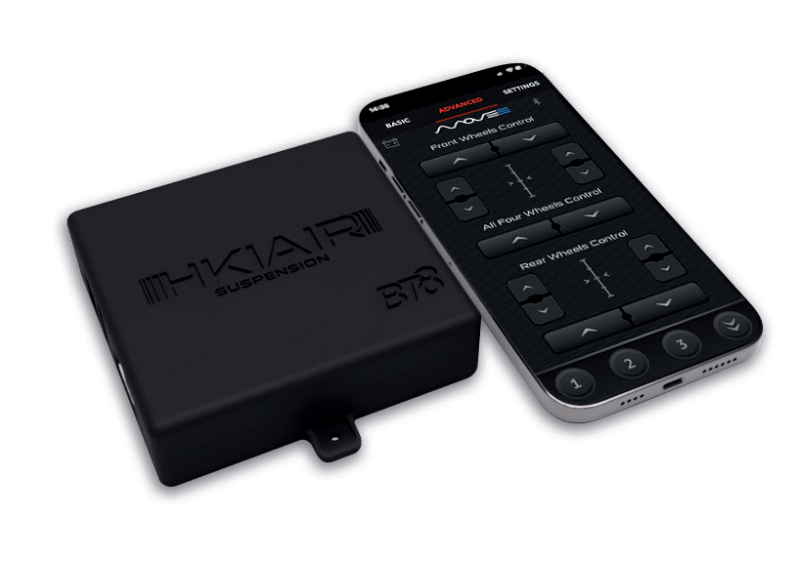MOVEE & BT8 - APP PERMISSIONS TUTORIAL
iPhone:
Configuring permissions
To manage the permissions on your iPhone, head to Settings. If you want to see which permissions a specific app has been permitted:Scroll down to the app you want to look more closely at and tap on its name.
You’ll see a list of permissions the app has and hasn’t been granted.
Tap on any permission to change its setting.
If you want to check out a specific permission and see all of the apps that are using it:

Choose Privacy & Security from Settings.
You’ll see a list of permissions (like Contacts, Location and Photos). Tap on the one you’re interested in to see which apps have been given permission and which have not.
Our apps, to maintain good connection, find modules nearby and actually control the modules, need precise location and the other permissions granted all the time. This is important for the App to be able to control the suspension via a connection to the module.
The location permission works differently from the others in that it offers much more granular control. This is a must permission for our Apps, and if not granted when first installing the app, might cause the app to no behave properly.
Tap Location Services at the top of the Privacy & Security screen.
You’ll see a list of apps; to the right of each will be the current status of its location permission.

In the list of apps, you’ll notice that some have a gray or purple arrow next to them. The gray arrow means they’ve used your location in the last 24 hours, and the purple arrow means they’ve used your location recently — another way to tell if an app might be overreaching in terms of the data it’s gathering.
Select an app to change its access to your iPhone’s location.
You’ll see at least three options: Never, Ask Next Time Or When I Share (so, on a case-by-case basis), and While Using the App.

Some apps (like weather and mapping apps) have an Always option, too, which means the app can also access your location while it’s running in the background.
The page also has a Precise Location toggle switch: turn this off, and the app is only allowed an approximate positioning for where you are.
Android:
Changing permissions
You can manage permissions for your installed apps at any time from the main Settings screen in Android.
Tap Apps, then choose an app. (If you don’t see the complete list, click See all.)
Select Permissions to see all the permissions the app wants. You’ll see separate lists of those that are currently allowed and those that aren’t.
Tap on a permission to enable or disable it.
The screens you see will vary depending on the permission. For notifications, for example, some apps give you more granular control, so you can allow certain types of alerts to pop up but not others.

Our apps, to maintain good connection, find modules nearby and actually control the modules, need precise location and the other permissions granted all the time. This is important for the App to be able to control the suspension via a connection to the module.
The location permission works differently from the others in that it offers much more granular control. This is a must permission for our Apps, and if not granted when first installing the app, might cause the app to no behave properly.
Many permissions can be set to be allowed, but only while the app is open. This stops apps from accessing parts of the system like the camera or the microphone when they’re not running. On many of these permissions, you’ll also see an Ask every time option, which means you’ll be prompted every time the app needs that permission.
You can also view a list of app permissions by choosing Security & privacy from Settings, then Privacy > Permission manager. Here, you get the list of permissions, along with the number of apps that have that permission — which is useful if there’s a particular permission you want to keep an eye on.

Tap on a permission to see which apps have and haven’t been given access to it.
Select an app to change the permission setting. Enable Precise Location.
You get exactly the same options as before, including Ask every time and Allow all the time.




